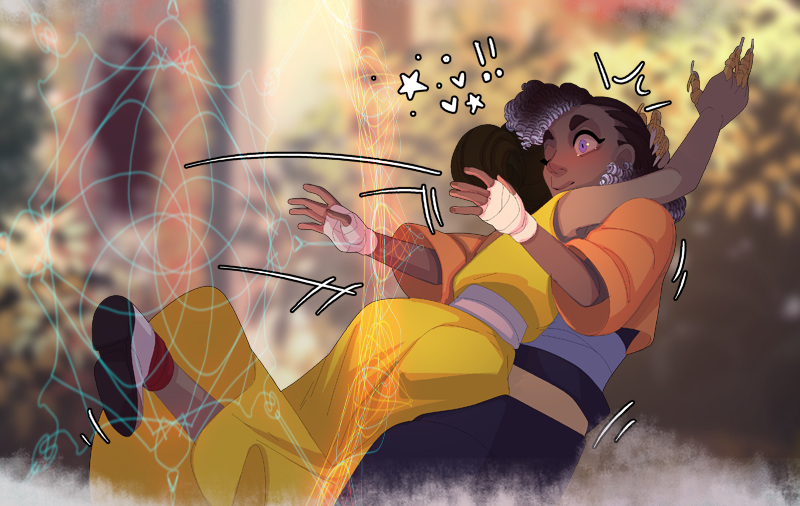
The indie comic scene is bigger than ever and if you’ve always dreamed of making a comic but haven’t made a plan, this is the guide for you. I’ve spoken to four successful comic creators and asked their advice on every step of the process that goes into making an indie comic: from choosing which of your ideas to pursue and setting your expectations, to selecting digital publishing platforms, creating and selling print copies, and marketing your comic.
Sometimes all that’s stopping you from embarking on a big project is the practical details. Below you can pick up advice from the artists who have successfully launched their comics, they'll guide you through the key steps, so you can bring your ideas to life.
Elsewhere on our site you can find helpful tutorials on how to make comic art, including our Procreate tutorials list. We also have reviews of the best digital art software and the best drawing tablets that can be used to create indie comics. For this feature on how to make an indie comic, the artists I’ve spoken to are:
- Tedd Walley, a veteran artist who has been self-publishing his comic, Mathilda: The Forces of Evil vs. The 3rd Grade, since 2001.
- Michelle Leffler, the creator of A Spell for a Smith, a fantasy romance about a shy witch living in the forest and a dwarven blacksmith running from his past.
- Lark & Wren, the duo behind Woven, the story of a young girl who, born into a world where magic has been banned, possesses dragon-like perceptive abilities and can perform feats of powerful magic.
Making a comic is a lot of work, so be sure to read the last section in which our artists share their best and most golden wisdom that will fortify you as you embark on your quest. Now, let's pick up some pro advice!
01. Set your goals
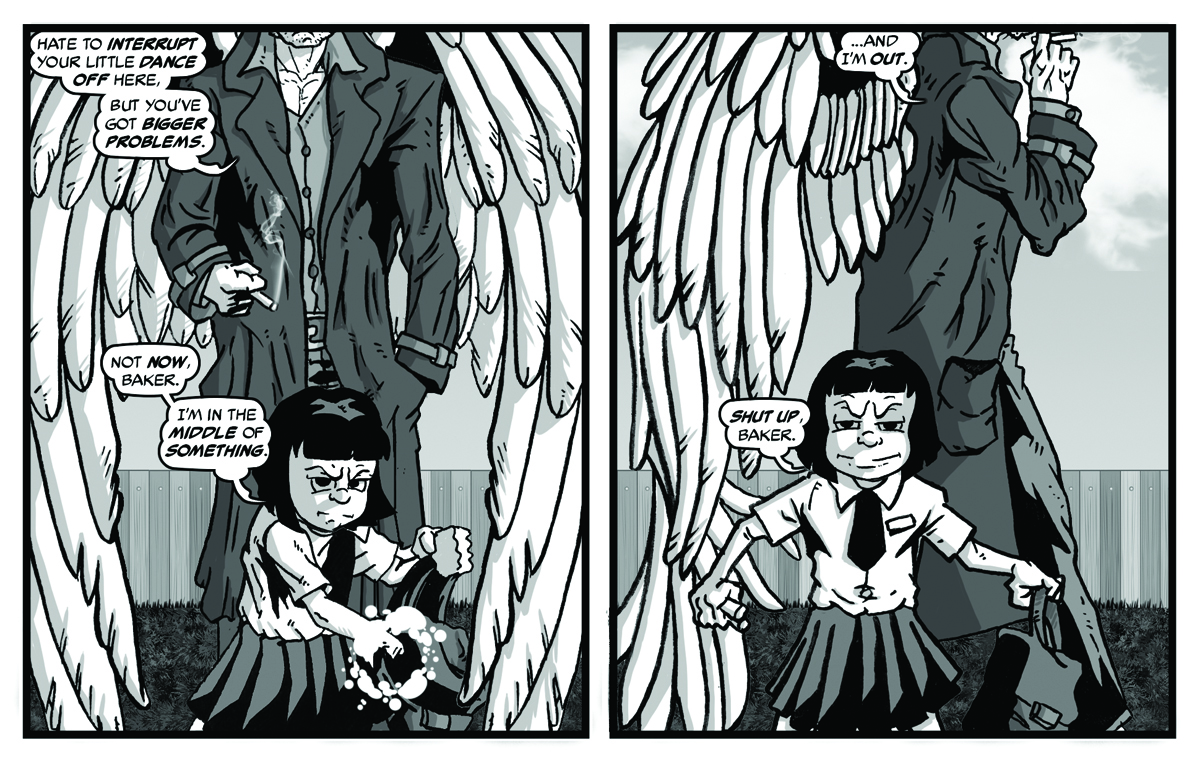
Making a living as a professional artist is becoming increasingly tough. So when starting any art project, it’s natural to think about how you’re going to make money from it, and whether you should choose a creative direction that’s more likely to be popular.
Tedd Walley says: “If your goal is to make money, then that money isn't going to be made off something you want to do, it's going to have to be off of something people want to buy. That means you'll need to do some research to see popular comics and what about them makes them popular.”
Make something that makes you feel excited and makes you want to create your story
Michelle Leffler
You might be someone who can manage to complete a project that’s designed to be popular as opposed to something that satisfies you creatively - only you can make that call - but all the artists we spoke to advised choosing something you’re passionate about.
“Make what you want to make!” says Michelle Leffler. “Make something that makes you feel excited and makes you want to create your story. Comics are just an insane amount of work. If you don’t love your story, you will lose steam, or end up resenting your work. It shows in the art when you don’t like what you’re working on. So if you want to commit to making a story using comics, be sure you are making a story you just can’t wait to put to paper.”
Lark says: “The style / genre / story you enjoy making most - one that you'll never grow bored of - is the one that will work best in the end. It may take a very long time to discover what that is, and that's okay. Most comics die in the crib, so we recommend chasing joy, not trends. Unless the trends are your joy - in which case; great success!!”
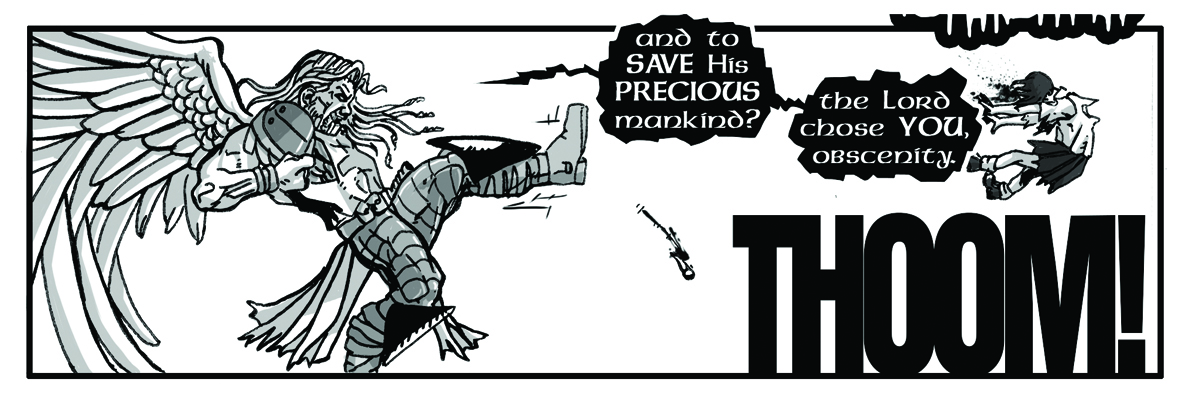
But making money and creating something you love don’t have to be mutually exclusive. After all, writers who work with a publisher are often working on a project they’re passionate about, but they’re asked to make tweaks to the story that will increase its popularity and make it financially viable. If you can find a way to capture the essence of the story you want to tell, but also hit on some elements that are popular, you could be onto a winner.
Wren says: “A reader's initial impression of a story relies heavily on their life and cultural experiences, for example what archetypes and narrative structures they are familiar with and how they resonate with them.
"It stands to reason then that stories which rely on more common archetypes and story structures - like ancient mythology, fairy tales, or significant shared historical events - have a higher chance of appealing to more readers.”
02. Work out your story and style

You probably have a number of story ideas and aesthetics in mind. In terms of what you can use, according to Michelle, the sky’s the limit: “I think anything can work as a comic! I have seen every genre in comic form, and the best thing about comics is that there is always a unique solution to any genre-specific problem. It's such a flexible medium, and is never really limited by art style or story.”
The best way to get a sense of what you can do with comics is to immerse yourself in the medium and read as many as you can. Michelle recommends:
- "Emily Caroll does fantastic horror comics. Some of those images still haunt me - in the best way."
- "Shadia Amin makes Marvel’s Spider-Ham comics, which are both superhero and comedy, and she shows great action scenes, and the timing is just perfect to make you laugh."
- "Deya Muniz just released her debut novel The Princess and the Grilled Cheese Sandwich, and the sweeping romantic panels in it will make you weep."
Wren says: “We really love comics that feel close to the heart and tend to put a twist on story conventions. Usually we like the more subtle twists, but occasionally a big shake up is fun too. In particular, we love stories that take folktales in less expected directions."
Some of Lark & Wren's favourites include The Witch, Kill Six Billion Demons and Four Leaf.
03. Get the right art apps
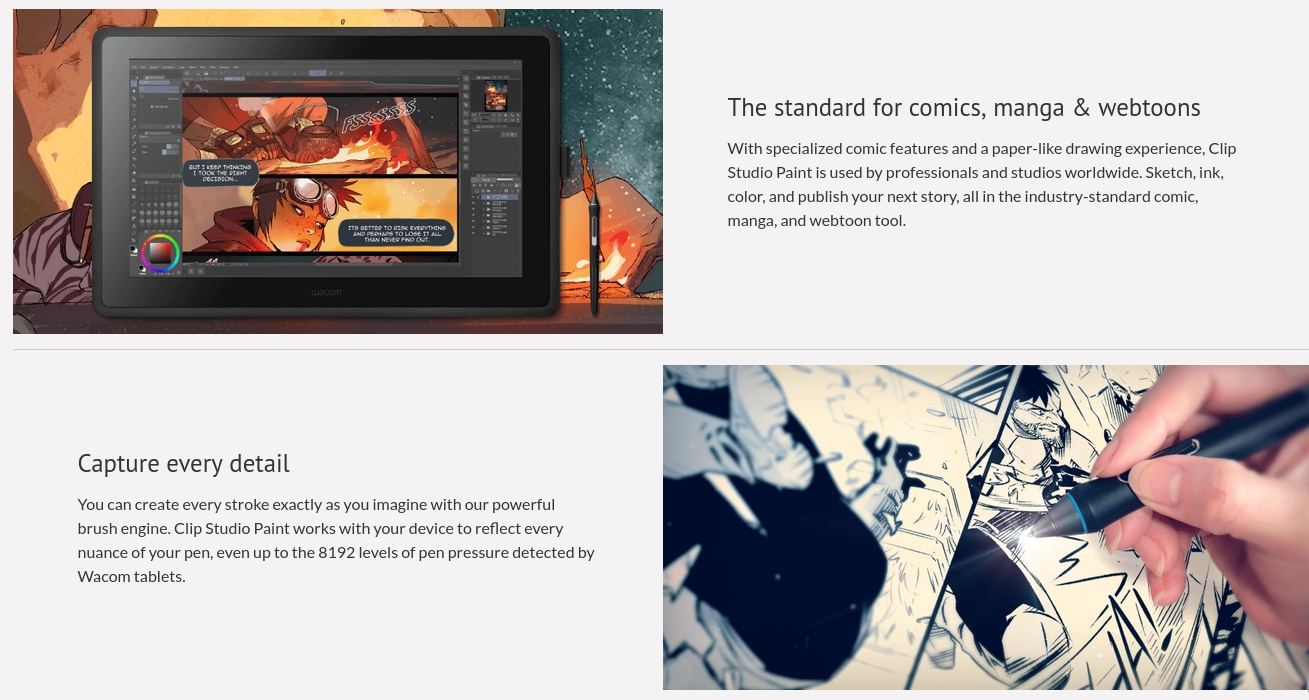
You can use any of your favourite art apps to create comics, but some software contains features that are particularly suited to the job. Michelle draws on an iPad Pro and uses Clip Studio Paint, Procreate, and SketchUp (read our guide to speeding up your workflow using SketchUp).
On Clip Studio, she says: “It has so many amazing tools for making comics built into the app: masked panels, page layouts, speech bubbles, effects brushes, etc. And there is the online marketplace as well, where you can find even more specific and niche tools that you may need.”
(If you're new to Clip Studio Paint, take a look at our list of Clip Studio Paint tutorials, as well as a Clip Studio Paint manga drawing guide how to feature.)
Michelle likes Procreate for its user friendliness and because it’s easy to learn. “I love the brushes available, especially for my more nature-y and organic backgrounds. It’s very intuitive.”
She also uses Sketchup, a simple 3D app, in a very clever way for building more complicated backgrounds. She has this ingenious tip: “I have built the main character’s homes and a simple town, so that I can always have an accurate reference in perspective for my backgrounds. It saves me a lot of time, because I don’t have to build perspective grids and remember the layouts for every last panel and shot. I can just place the camera, screenshot, then draw over the model.”
04. Digital or print?
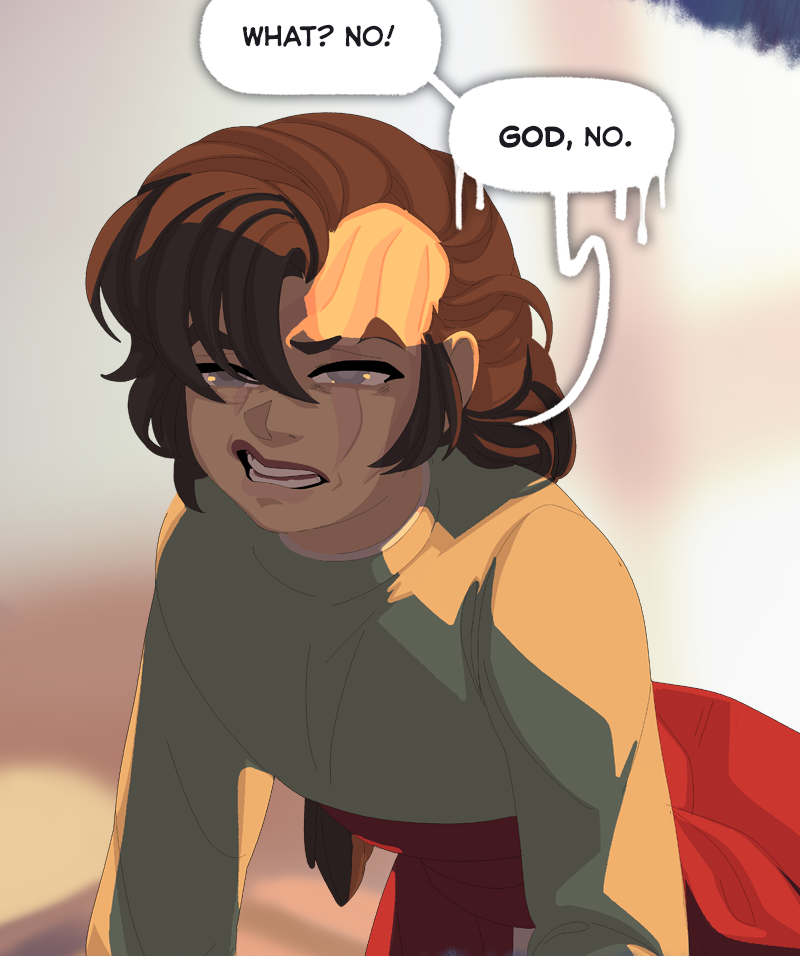
Publishing your comic in a digital format has the obvious advantage of costing you nothing, being logistically simple, and enabling you to reach a global market. So the question is whether you also want to put out a print version alongside your digital offering.
Many artists find it enormously satisfying to see their work in print, and if you exhibit your work at conventions, it’s another thing to sell on your stand and a way to connect with your readers. If you do it right, the profit margins can be decent. Some people only want to read physical comics, and Tedd publishes his comic in print as a way to reach that audience.
The downside of print is that there are substantial upfront costs, and it’s a lot of work. You have the option of using a print-on-demand service, which will handle the shipping for you and avoids the initial outlay of having to pay for a whole print run, but margins with this option are less good.
05. Publishing your comic in print
The simplest way to publish in print is to use the dropshipping model, whereby you use a third party service to handle the printing, packing and delivering of your book. There are many such services to choose from; Blurb is one, Lulu is another.
The upside of using these print-on-demand services is that it saves you a lot of work. The downside is that you get less control over how the final product turns out, and you won’t make as much money. As an example, we priced a 30-page, saddle stitched, premium colour comic book with matte cover finish on Lulu, and it was £7.74 per book.
Many artists prefer to order in bulk from a printing company and then handle the fulfilment themselves. If you can find a local company, this can be a bonus as you can visit the premises to inspect paper options, binding styles, and printed colour samples in person.
When you first start out, it can be a good idea to find a company that will do a small print run of 50-100 books so that you can learn how things work without having to invest a lot of money.
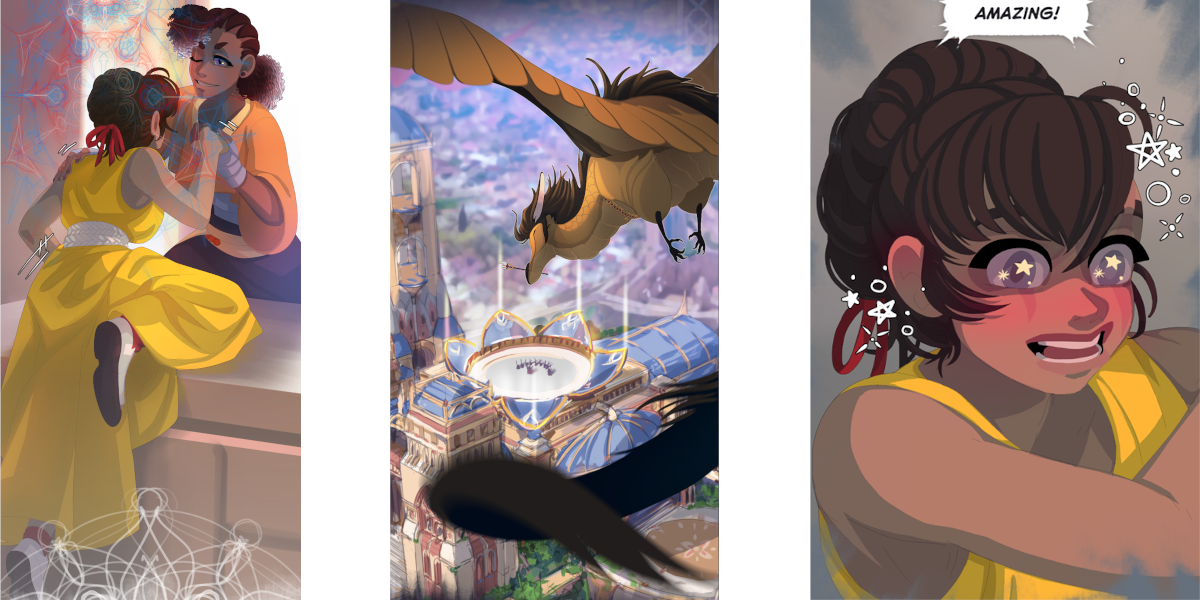
When you’ve found some printing companies that can make the kind of book you want at a price you like, the final differentiator is how easy they will be to work with. What’s their website like? How do they need to receive your files?
They will have very specific requirements about how you send your pages to them, and you’ll need to follow them exactly. Before you commit to a big order, get them to send you a sample copy to make sure the printing is correct and the colour matching is decent.
Once you receive your stock, be sure to inspect each book as it’s not uncommon to find errors with printing or binding. You’ll then need to send out the orders yourself. Shipping software such as Sendcloud will help you manage this.
Whatever services you choose, think about how they all fit together, as this can make your life a lot easier. For example, some print-on-demand services integrate with Wix or Shopify (read our beginners guide to Shopify). When choosing your shipping software, look at what kind of integrations it can do, and whether you can connect it easily to your website or Kickstarter (read our tips for launching a Kickstarter).
06. Publishing your comic digitally
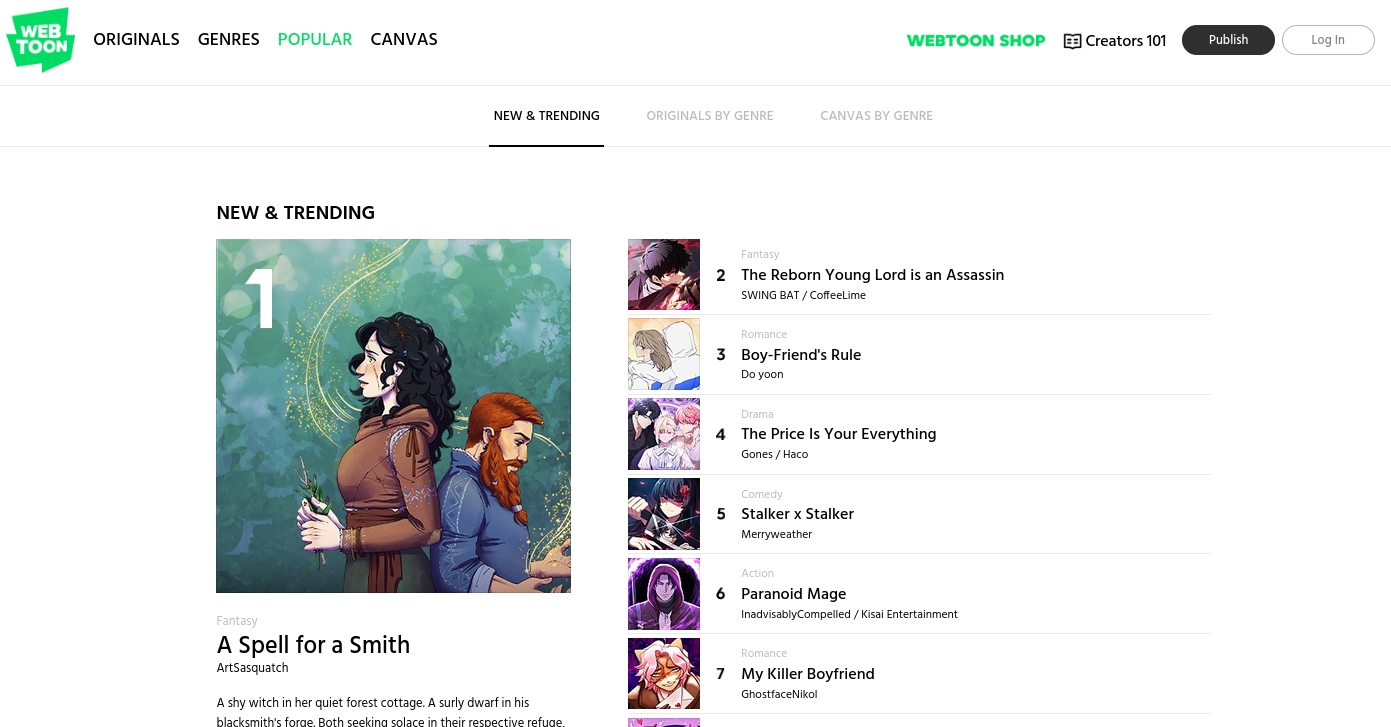
Publishing digitally on a comic platform gives you access to a global audience, and you can do it for free. There are a number of platforms out there, each with their own way of doing things. Here are some of them:
- Webtoon: A free app focused on delivering short comics and manga that can each be read in under five minutes.
- Tapas: Mostly manga-style comics and books, but the app also offers a merch dropshipping platform.
- Comix: Made by indie comic creators for indie comic creators, this is a platform that offers crowdfunding, back catalogue sales and a marketplace for new launches.
- GlobalComix: A good comics platform but you will be rubbing shoulders with established publishers like Image Comics.
- Blocktoons: This is a blockchain / NFT app that offers a unique way to fund your indie comic, but it's not for everyone.
Webtoon has two models: Canvas and Originals. Canvas is a free self-publishing platform where anyone can upload their comic. Once you reach a certain number of viewers and subscribers, you’ll get a portion of the advertising revenue. You can also put a link to your Patreon next to your comic. Webtoon Originals are comics that are published by Webtoon, so the creators sign a contract and get paid for their work.
Michelle chose Webtoon Canvas because it had the largest audience. Her comic was spotted, and A Spell for a Smith is now published by Webtoon as an Original.
Lark & Wren originally put their comic, Woven, on both Webtoon Canvas and Tapas. “Webtoon was where we found a growing group of folks who really liked our story,” says Wren. “The readers there were also very excited with each update, and our readership grew substantially over a period of three or four months. We were then approached by Webtoon to redo Woven as an Originals comic on their platform. Much like any larger corporate entity, there is a myriad of contracts/paperwork that always keeps us on our toes, but our project with Webtoon has had major benefits.”

The first win for the duo was meeting their editor, Sonya Tagari, and learning valuable skills from her. “Through her advice and input, we went through a three-year intensive crash course of how to create a long series. It was tiring, but worth it,” says Lark & Wren.
The second major bonus was that they managed to get a contract that enabled them to retain full rights over the Woven IP - a situation that’s harder to come by these days.
Wren says: “Understanding one's rights as a creator in regards to IP and distribution - both digital and physical - is woefully under-discussed, and we highly advise anyone to get a firm understanding of any contract prior to signing. For us, signing over IP rights was a hard no.”
Tedd has his comic, Mathilda: The Forces of Evil vs. The 3rd Grade, on Webtoon, Comix and GlobalComix. “I've looked for companies that cater towards the indie comic,” he says. He points out that although putting your comic on multiple sites increases your potential reach, managing those sites takes time and can reduce your creative output.
07. How to market your comic book
Before you even start work on your comic, work out what niche it fits into, and build up a presence for yourself in that community. Being friendly, kind and encouraging to other creators will go a long way when you start to put your own work out there.
To draw attention to her comic, Michelle focused on what made it different to the rest: “I really leaned into the unique aspects of my story: slow burn fantasy romance with cottage core vibes, and unique main characters, one of whom is a dwarf. I don’t see lots of other stories like that, so I made sure that people knew from just my promotional art what they could expect.
Whatever you think has made your story different, use that
Michelle Leffler
"I used a lot of forest and floral elements with cosy colours, and drew the main two characters interacting in a decidedly cute way. Whatever you think has made your story different, use that. Make yourself stand out!”
Notice that while Michelle’s concept - a romance between a witch and dwarf - is special and unique, she does touch on some aspects that have a strong following at the moment. With anxiety levels on the rise, many people are seeking comfort and cosiness from their entertainment media, and this ticks that box. Cottage core is also a big trend, and fantasy romance is always a popular genre.
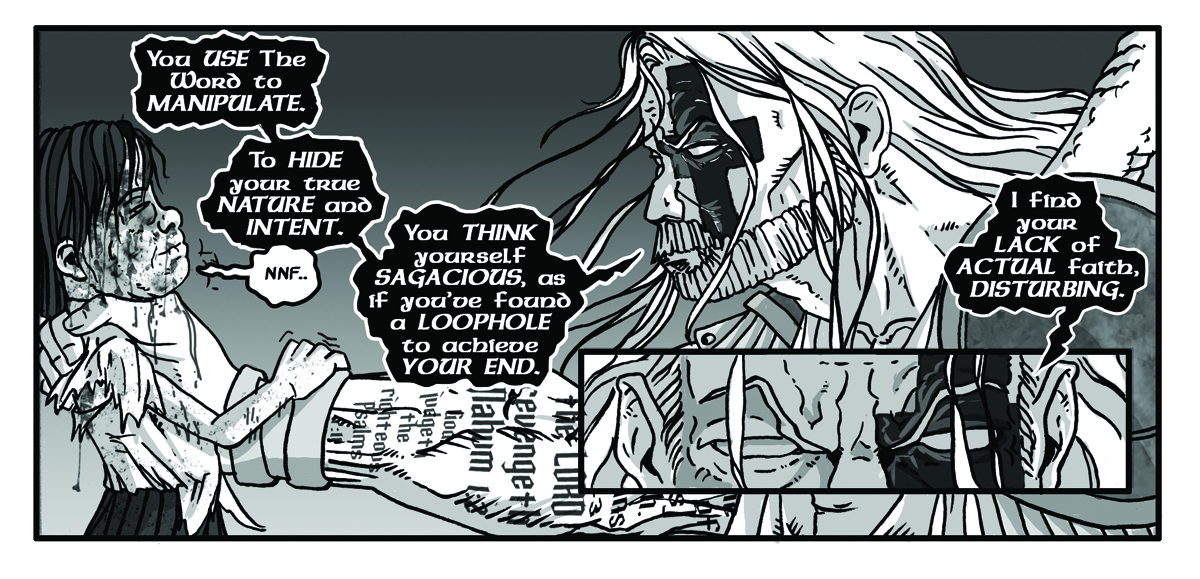
Tedd’s advice for effective marketing is to use a tried-and-tested routine to keep people engaged:
- “Publish on a regular basis. People should be able to set their calendars to when your new page, panel, or episode comes out. Consistency breeds familiarity. Be consistent in your promotion of the work. Use the same language for your posts. Include links to your work. Use the same hashtags. Your message should be as consistent as your publishing dates.”
- “Find comparisons to your work. If someone likes that work, they may like yours as well.”
- “Have free things to give away. I give away a sample, 8-page comic. If they like it, they'll love the series. The comic is cheap to produce and I can write it off on my taxes as promotional material.”
Lark & Wren found that their audience grew organically, and they use Twitter, Bluesky and Tumblr to engage with their readers. “The only interaction we really wanted was to answer fun questions in regards to our various characters and their stories,” says Wren.
Lark says: “We endeavour to create stories and artwork primarily for ourselves and for five or so other like-minded weirdos. We put it out there for free and if more folks happen to enjoy what we make, then that's a bonus!”
08. Some final words of advice from the experts
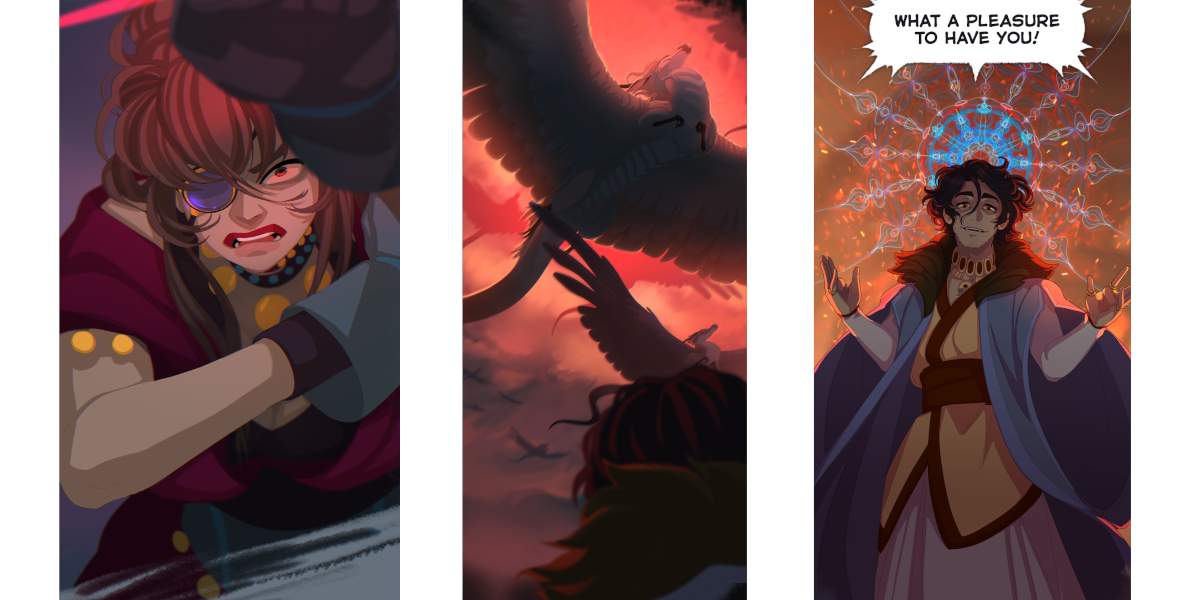
Making a comic is a big undertaking that requires a lot of management on top of an immense amount of creative work. Our artists have these words of wisdom and hard-learned lessons to share that will help you on your way.
Wren says: “The best advice we can give is a variation of the fail-forward principle: start right away, and be prepared to change and learn as you move forward. Don't let excessive planning get in the way of telling a story.
“Caveat: never start with your 'dream project' or a concept that you hold really close to your heart. Always start with a story you are willing to see changed or even let go. As a storyteller, you are going to create many things, so don't be afraid to explore any ideas you conjure up, just be equally prepared to end it if the need arises and move on.”
There are a lot of folks out there who are eager to exploit and capitalise off of your hard work and passions
Lark
Lark says: “Comics can really break your heart if you let it. There are a lot of folks out there who are eager to exploit and capitalise off of your hard work and passions. Start with a project that you can make a ton of mistakes with, that won't hurt you if you take a wrong turn with it or sign a bad deal that requires you to drop it like a lizard drops its tail.
"There's a wealth of hard lessons we all must learn by experience when we break into this ecosystem, but they don't have to be devastating if you're prepared to fail with the explicit goal of learning from those failures.”
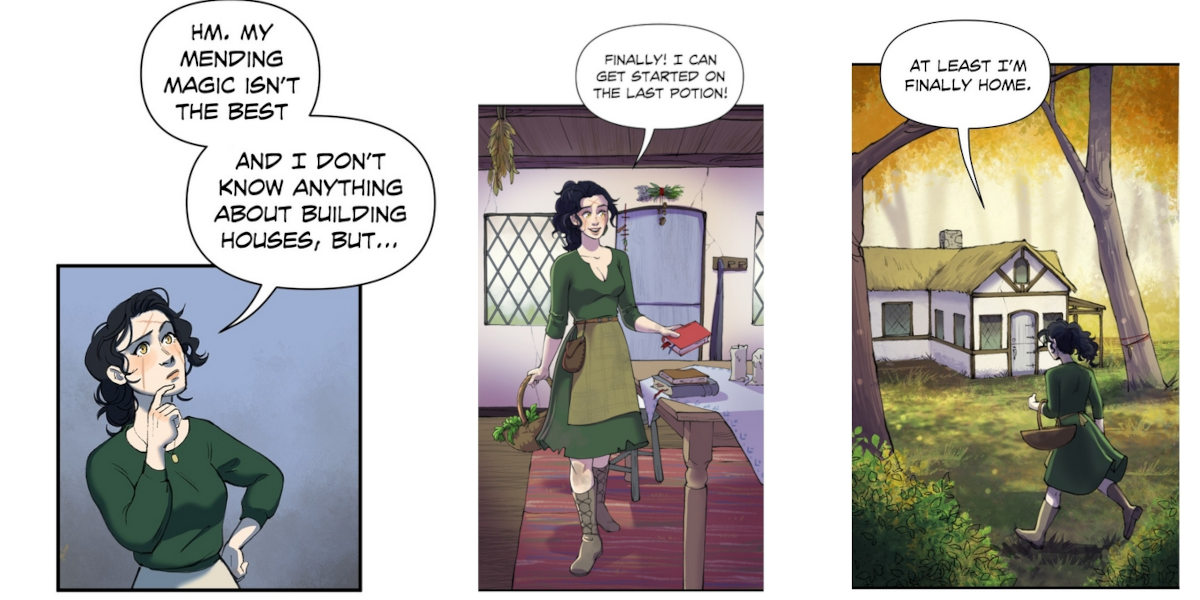
Michelle says: “Know your story’s beginning, middle, and ending before you begin. If you only have a great idea, you’ll be excited at first but lose your way and wind around and never make it to the finish line. Start drawing actual panels when you have a complete story to work on.
“Also, stop waiting for the right moment. START. If you are waiting for a lightning bolt, you may never get it, and your comic will never be born. MAKE! YOUR DREAMS! COME TRUE!”
Stop striving for perfection. It will never be perfect. Put it out and your next one will be better
Tedd Walley
Tedd says: “Do it for you. When you do it for you, no one can take that away from you. You can go to your grave and still say ‘I did that’. You're immortal. It doesn't matter if they liked it or not, it still exists.
“And stop striving for perfection. It will never be perfect. Put it out and your next one will be better. It should be because we grow. Striving for perfection hinders you. No one can read it if you never put it out.
“Work on it every day. It's a game of inches not yards. If you only get a paragraph written that day, you're still a paragraph farther than you were yesterday. If you only get one panel drawn that day, you're a panel farther along than you were before.
“Surround yourself with people that support you and what's important to you, but don't sacrifice them to it. Learn to take a break and give back to those that support you.”
If you're keen on launching your own comic, consider upgrading your kit. We have guides to the best laptops for drawing as well as the the best chair for back pain to help you in those long stints of work.



!["[T]he First and Fifth Amendments Require ICE to Provide Information About the Whereabouts of a Detained Person"](https://images.inkl.com/s3/publisher/cover/212/reason-cover.png?w=600)



